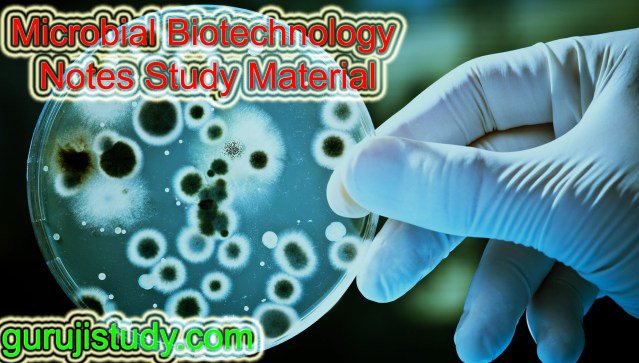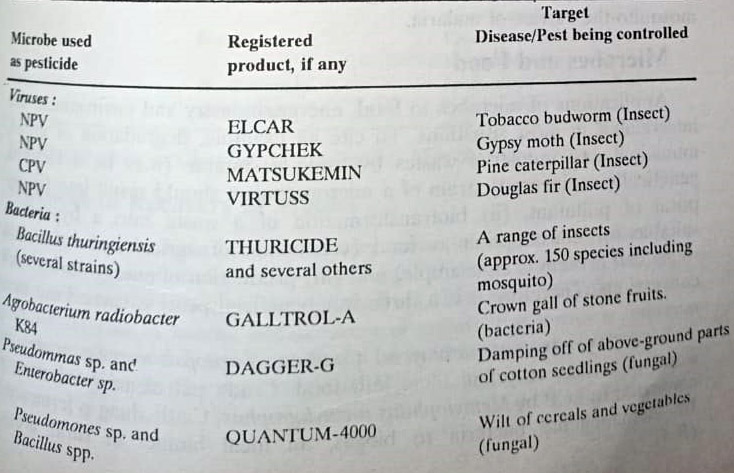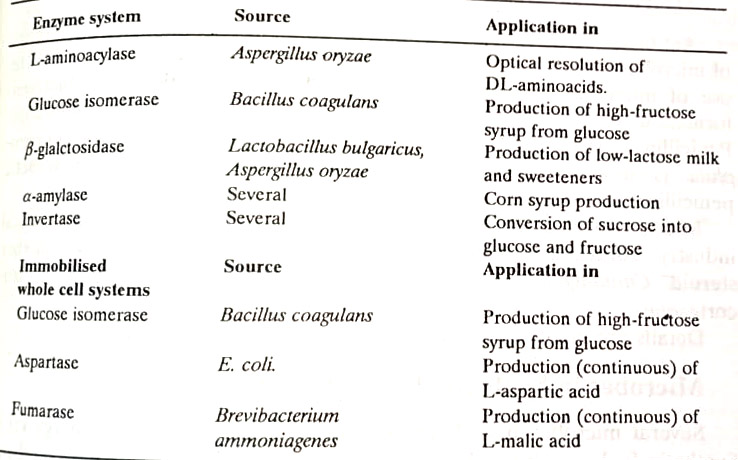BSc Microbial Biotechnology Notes and Study Material
BSc Microbial Biotechnology Notes and Study Material: BSc is a three-year program in most universities. Some of the universities also offer BSc Honours. After getting enrolled for BSc, there are certain things you require the most to get better grades/marks in BSc. Out of those, there are BSc 2nd Year Study Material, BSc Sample Model Practice Mock Question Answer Papers along with BSc Previous Year Papers. At gurujistudy.com you can easily get all these study materials and notes for free. Here in this post, we are happy to provide you with BSc Microbial Biotechnology Notes and Study Material.

BSc Microbial Biotechnology Notes and Study Material
New strains of microbes have been developed having the desired activities (entirely a new activity of enhancement activity in terms of rate productions). Environmental microbiology, a new field, could thus become of much relevance to us.
Microbes and Agriculture
Besides being important in the biogeochemical cycling of nutrients, microbes play a vital role in the maintenance of soil fertility and in crop protection.
[I] Soil fertility
Microbes are being exploited in two important ways – biofertilizers, and creating new nitrogen-fixing organisms.
1. Biofertilizers. Potential of Rhizobium, Azotobacter, Beijerinckia, Azospirillum, cyanobacteria, such as species of Aulosira, Anabaena, Nostoc, Plectonema, Scytonema, Tolypothrix, and Azolla as biofertilizers has been exploited so as these could serve an alternative to chemical fertilizers. Many brands of rhizobial inoculants are already on market today in the country. Several organizations and manufacturers are producing huge quantities of Rhizobium culture in the country.
These include Micro. Bac., India, Shyamnagar, Parganas; Bacifil Inoculants, Lucknow; Govt. of Tamil Nadu: Nitro Fix Industries, Calcutta (W. Bengal) and Indian Organic Chemical Ltd. Bombay. In some other States, units are being prepared for the increase in their production. Much progress has also been made with cyanobacteria in this direction. (BSc Microbial Biotechnology Notes and Study Material)
Mycorrhizae, both ecto- and endomycorrhiza help in the uptake of N, P, K and Ca. They, particularly help in phosphorous nutrition.
2. New nitrogen-fixers. Through recombinant DNA technology efforts have been made to introduce nitrogen-fixing genes (nif genes) into wheat, corn, rice, etc. Plasmids of the bacterium, E. coli, and yeast are being worked out for such a possibility. Hybrid E. coli plasmids cloned with nif genes of a nitrogen-fixing bacterium, Klebsiella pneumoniae, and hybrid yeast plasmids are then integrated.
[II] Biopesticides
Several microbes (viruses bacteria, and fungi) are being developed as suitable biopesticides for the management of insect and nematodal pests. Some fungi have a good potential for their use as bionematicides to control nematodal pests of vegetables, fruit, and cereal crops.
Some bacterial and fungal products are also in use to control diseases in the roots and shoots of plants. Following are some of the microbial pesticides registered for commercial production:

[III] Bioweedicides
Several fungi have been found very useful in the control of troublesome weeds in crop fields. Registered products are available in the market for use in several countries.

Microbes and Public Health
The most successful bio-insecticide has so far been the bacterium, Bacillus thuringiensis. Several registered products of different strains of this microbe are on sale, thuricide being one, for the control of insects including the mosquito-the carrier of malaria.
Microbes and Food
Applications of microbes to food, energy, industry, and the environment are interrelated in most situations. To cite an example, degradation of urban, municipal, and industrial wastes by using a suitable (maybe a tailored, genetically-engineered) strain of a microorganism should result in (i) disposal of pollutant, (ii) biotransformation of waste into a byproduct, suitable for consumption as food (conversion of agricultural waste into single cell protein is an example) and (iii) production of energy during conversions. Therefore it is a three-way beneficial process carried out by microbe. (BSc Microbial Biotechnology Notes and Study Material)
Microbes and Industry
Applications of microbes in the industry are well known. Various microorganisms are used for the commercial production of alcohols, acids, fermented foods, vitamins, medicines, enzymes, etc. One recent development in industrial microbiology has been the production of immobilized enzymes and cells for the production of these chemicals at enhanced rates with simultaneous recovery of the enzymes involved in such processes. (BSc Microbial Biotechnology Notes and Study Material)
New strains of microbes have also been developed through recombinant DNA technology for the overproduction of metabolites. Immobilized enzymes and cells could have their maximum application in industrial microbiology. Immobilised enzymes have also been utilised in medicine. Some examples of applications of immobilised enzymes and cells of microorganisms in the industry are given below:

Microbes in Recovery of Metals
Recently microbes have been found very useful in the enhanced recovery of metals including uranium from low-grade ores. Through bioleaching, these microbes are able to solubilize the metals from their ores. Microbes thus play important role in the mining and recovery of metals. For instance, Thiobacillus thiooxidans and T.ferrooxidans can be used in the recovery of copper.
Microbes in Enhanced Recovery of Petroleum
Microbes are used in the tertiary recovery of petroleum. For instance a bacterium, Xanthomonas campestris is being exploited for this purpose. Some thiobacilli have also been found to have this potential.
Microbes in Paper Industry
Mechanical pulping in the manufacturing process of paper from wood needs much energy and also does not preserve the quality of the product. Therefore, the potential of some lignin-decomposing fungi (ligninolytic fungi) has been exploited for this process. Biological pulping by use of these higher fungi (Basidiomycotina) could find application in the paper industry. Phanerochaete chrysosporium has been mostly studied for bio-pulping. (BSc Microbial Biotechnology Notes and Study Material)
Microbes in Medicine
Antibiotics and other chemotherapeutic agent production by a range of microbes are well-known. Recent development in this area has been the use of microbial biotechnology in steroid transformations and the biotransformation of natural penicillin G to several semi-synthetic penicillins. Penicillin acylase produced by Saccharomyces cerevisiae and Kluyvera citrophila is used in the biotransformation of penicillin G to semi-synthetic penicillins.
The microbial transformation of steroids is very important in the pharmaceutical industry. Rhizopus nigricans hydroxylates progesterone forming another steroid. (BSc Microbial Biotechnology Notes and Study Material)
Microbes in Synthetic Fuels (Energy)
Several microbes have been found helpful in the solution to the energy crisis. Synthetic fuels produced by the activity of microbes include ethanol, methane, hydrogen, and hydrocarbons. Gasohol, a 9:1 blend of gasoline and ethanol is a popular fuel in the USA. The most efficient microbes are Zymomonas mobilis and Thermoanaerobacter ethanolicus.
Methane is produced by methanogenic bacteria and biogas, a mixture of CH4, CO2, H2, N2, and O2 is produced during the fermentation of cattle dung by several bacteria including methanogens. (BSc Microbial Biotechnology Notes and Study Material)
Microbes and Environment (Environmental Microbiology)
Microorganisms play several key roles in the environment. Besides their well-known activities in biogeochemical cycling, soil fertility maintenance, etc., several microbes could be shown very helpfully in the maintenance of environmental quality through the biodegradation of wastes (urban, municipal and industrial) into useful products and also in the biodegradation of harmful pesticides used in crop protection and public health. DDT, lindane heptachlor, chlordane, malathion, etc., are biodegraded by several bacteria, and fungi. These microbes are thus efficient purifiers of the environment. (BSc Microbial Biotechnology Notes and Study Material)
Besides this, microbes are also able to remove toxic heavy metals from industrial wastes.
Some bacteria are also able to metabolize hydrocarbons in the petroleum and thus very useful in removing of oil-spills and grease from water bodies. A strain of Pseudomonas aeruginosa has been developed in the USA which is able to produce a glycolipid emulsifier that reduces the surface tension of an oil-water interface, thus removing oil from water. For the removal of grease deposits, a mixture of several bacteria is used. (BSc Microbial Biotechnology Notes and Study Material)
Some microorganisms can also be used in environmental monitoring and bio-monitoring. A biosensor is a biophysical device used to detect the presence and quantify the specific substances (sugars, proteins, hormones, pollutants) in specific environments.
BSc Microbial Biotechnology Notes and Study Material
BSc 2nd Year Sample Model Practice Mock Test Question Answer Papers